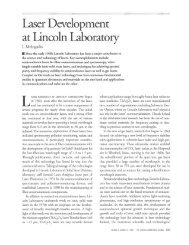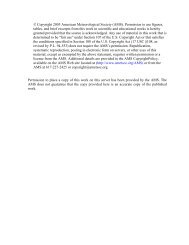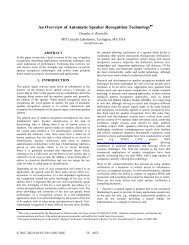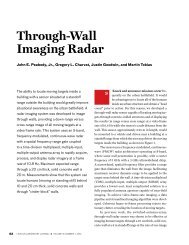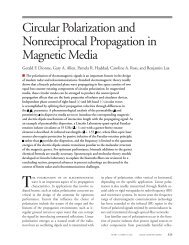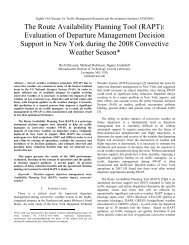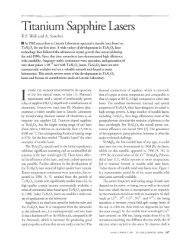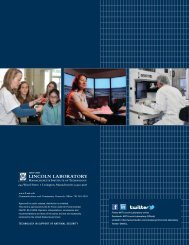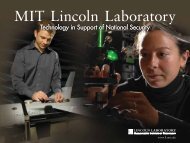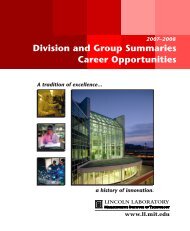Automated Flight Strip Management System Functional Description
Automated Flight Strip Management System Functional Description
Automated Flight Strip Management System Functional Description
Create successful ePaper yourself
Turn your PDF publications into a flip-book with our unique Google optimized e-Paper software.
5. SYSTEM REQUIREMENTS<br />
The overriding requirement for the Automatic <strong>Strip</strong> <strong>Management</strong> <strong>System</strong> (ASMS) is<br />
that it perfonn at least all of the functions of the current manual system with less than the<br />
current workload and distraction imposed on the controller. The description of the current<br />
system in the ftrst section ofthis requirements document therefore becomes an integral part<br />
ofthe ASMS functional requirements. ASMS must be the electronic equivalent ofat least<br />
the system described in section 4. It must perfonn all ofthe services described in section 4<br />
and be compatible with the current operation. Any acceptable design must be compatible<br />
with current outside equipment, procedures, and interfaces; Le. ASMS cannot count on<br />
changes to anything else in order to satisfactorily perfonn. At the same time, a successful<br />
ASMS design will facilitate and accommodate future hardware and operational changes and<br />
will be designed to integrate easily with future systems such as AAS, TCCC, TATCA,<br />
Mode S, and ASTA.<br />
This document is not intended to be a design requirements document, but a<br />
description of the functional requirements. It is necessary at times to illustrate "types" of<br />
designs in order to describe functional requirements but these should not be taken as design<br />
requirements. Any design which accomplishes the same functions will be considered.<br />
Indeed, the ASMS program will of necessity involve prototyping of hardware and software<br />
designs and controller interfaces to test system acceptance and perfonnance.<br />
5.1 HARDWARE AND INTERFACE REQUIREMENTS<br />
The initial ASMS design must integrate with the current system of flight data<br />
information flow employed at Logan airport. This involves interfaces primarily with the<br />
Host computer through the FDIO and the ARTS computer and display. The required<br />
interfaces for information flow are illustrated in Figure 7. The interface between Logan and<br />
the "outside world" for flight strips is primarily at the <strong>Flight</strong> Data positions in the Tower<br />
Cab and TRACON.<br />
While Figure 7 is an illustration of "infonnation interfaces," Figure 8 is an<br />
illustration of hardware and hardware interfaces consistent with the infonnation flow<br />
requirements. The system envisioned would have a stand alone computer (and probably a<br />
required backup) with ten separate displays. Each of the displays would be interchangeable<br />
and each display would be capable of having the screen customized to any controller<br />
position by the supeIVisor; Le. the supeIVisor could decide that a particular screen would be<br />
the Ground Control position. Any position will be able to access any other position's<br />
display with a single button push so that the Local position could, for instance, access the<br />
Ground Control screen by pushing one button.<br />
The ASMS computer must be capable ofreceiving <strong>Flight</strong> Progress <strong>Strip</strong> data that<br />
currently goes to the FDIO printer. Any installation must also allow flight plans to be ftled<br />
from the <strong>Flight</strong> Data position to the Host, replacing, emulating, or interfacing with the<br />
current Wespercorp FDIO equipment. The ASMS software should provide a "buffer"<br />
between the <strong>Flight</strong> Data position and the Host allowing the position to continue with his or<br />
her <strong>Flight</strong> Progress <strong>Strip</strong> work while ASMS interacts and waits for the HOST in requesting<br />
and ftling flight plans. The tap into the TATCA interface may be desirable if there is<br />
additional useful information that can be gained from the Host but the FOIO interface is still<br />
required because ASMS must be able to enter and amend flight plans (send infonnation into<br />
the Host emulating the FDIO) and the hardware design should be capable of being<br />
introduced at other Towers that may not have a TATCA interface.<br />
27



